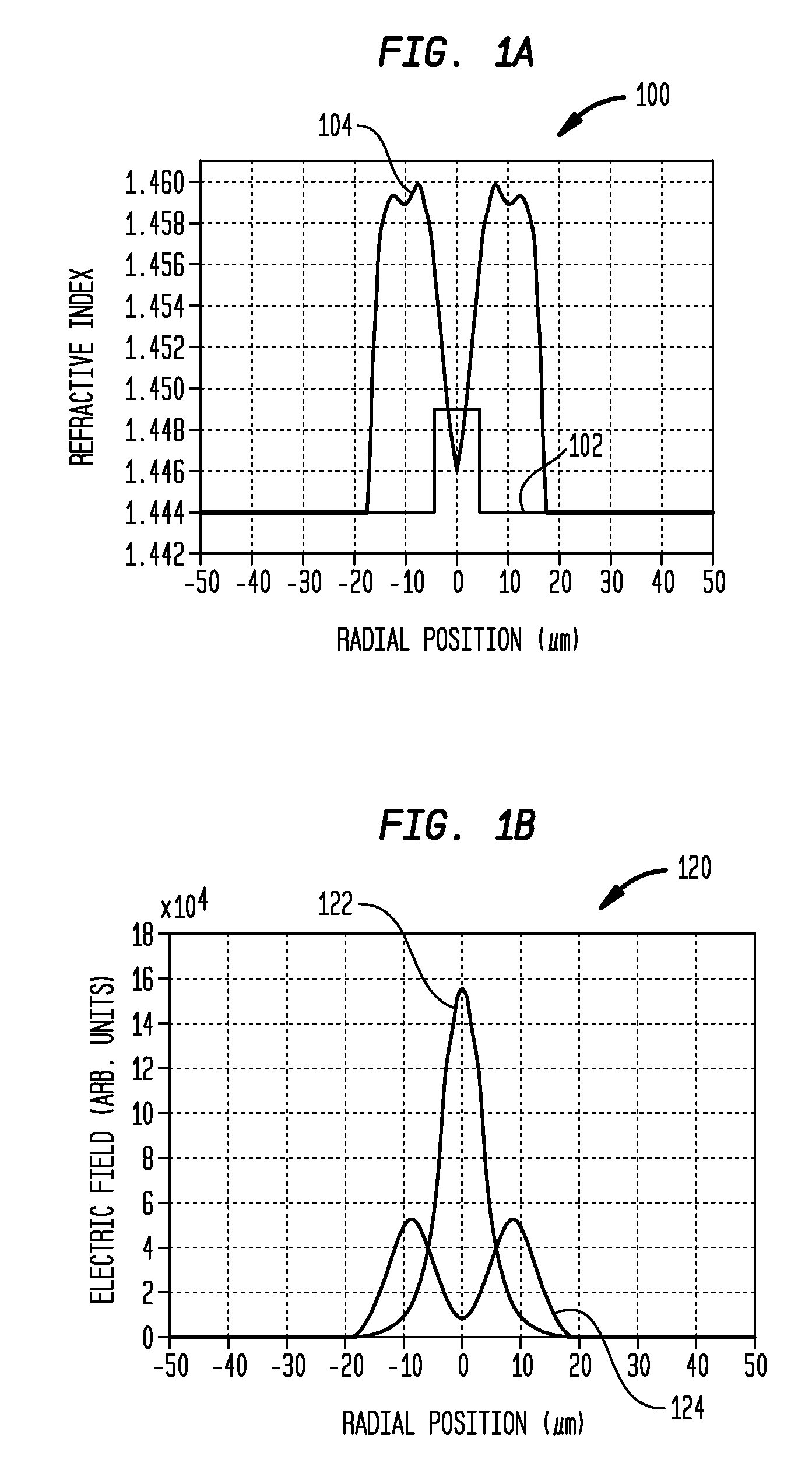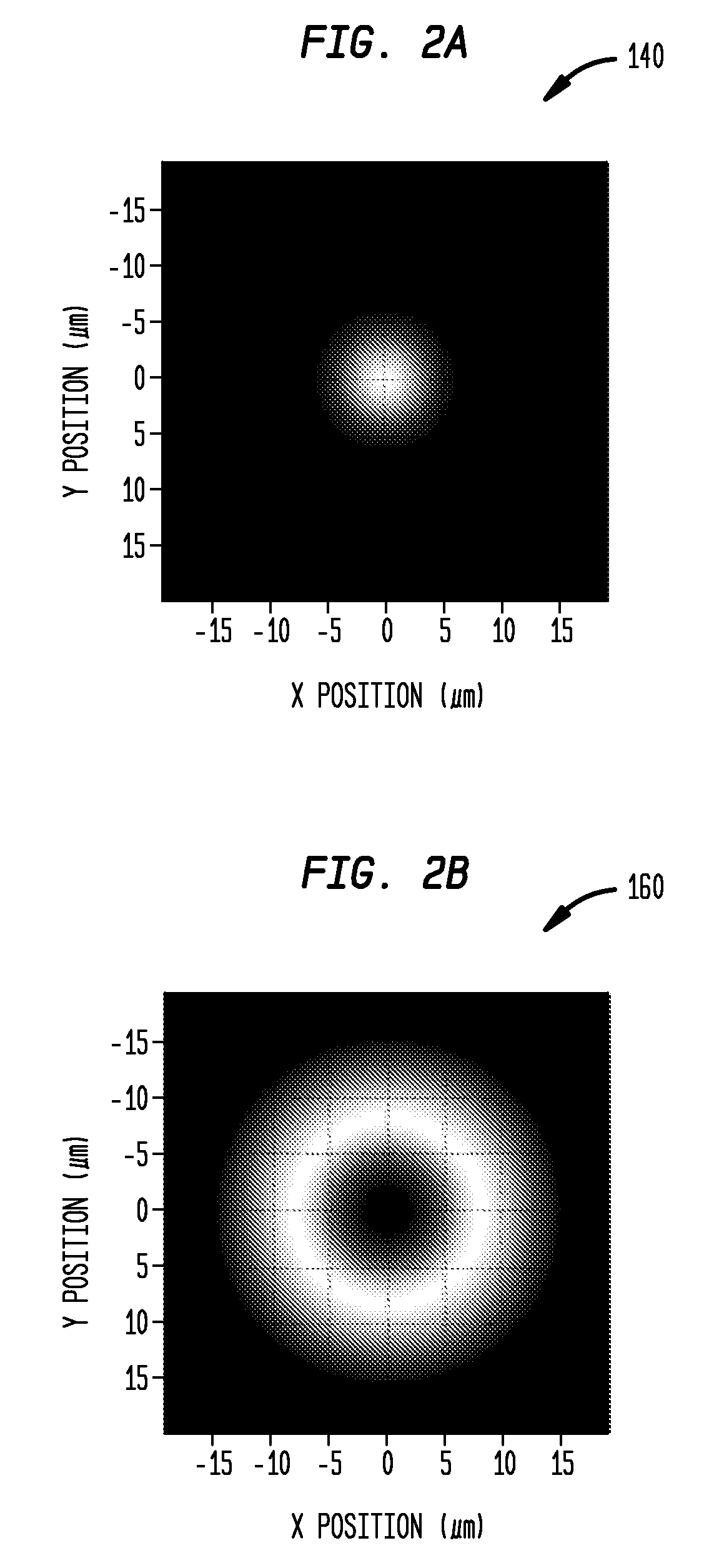Optical fiber devices and methods for interconnecting dissimilar fibers
a technology of optical fiber and dissimilar fibers, applied in the direction of cladded optical fibre, instruments, optical elements, etc., can solve the problem that non-standard mode fields cannot be efficiently interconnected using existing technology, and achieve the effect of low-loss coupling
- Summary
- Abstract
- Description
- Claims
- Application Information
AI Technical Summary
Benefits of technology
Problems solved by technology
Method used
Image
Examples
Embodiment Construction
[0021]An aspect of the invention provides a technique for reducing coupling loss between a launching fiber and a receiving fiber with dissimilar mode fields, at least one of which is non-Gaussian. A technique is described for designing and manufacturing a specially tailored multimode fiber with a non-parabolic index profile that, when interconnected between the launching and receiving fiber, smoothly transforms the size and shape of the launching fiber output mode field to substantially match the mode field distribution of the receiving fiber. The described technique and coupling waveguide achieve a significantly improved reduction in coupling loss, compared with prior art techniques for reducing coupling loss, including prior art techniques, for example, in which a short length of parabolic index profile multimode fiber is used for fiber interconnection. As described herein, numerical fiber design tools can be used to design such special non-parabolic multimode intermediate fibers ...
PUM
 Login to View More
Login to View More Abstract
Description
Claims
Application Information
 Login to View More
Login to View More - R&D
- Intellectual Property
- Life Sciences
- Materials
- Tech Scout
- Unparalleled Data Quality
- Higher Quality Content
- 60% Fewer Hallucinations
Browse by: Latest US Patents, China's latest patents, Technical Efficacy Thesaurus, Application Domain, Technology Topic, Popular Technical Reports.
© 2025 PatSnap. All rights reserved.Legal|Privacy policy|Modern Slavery Act Transparency Statement|Sitemap|About US| Contact US: help@patsnap.com



